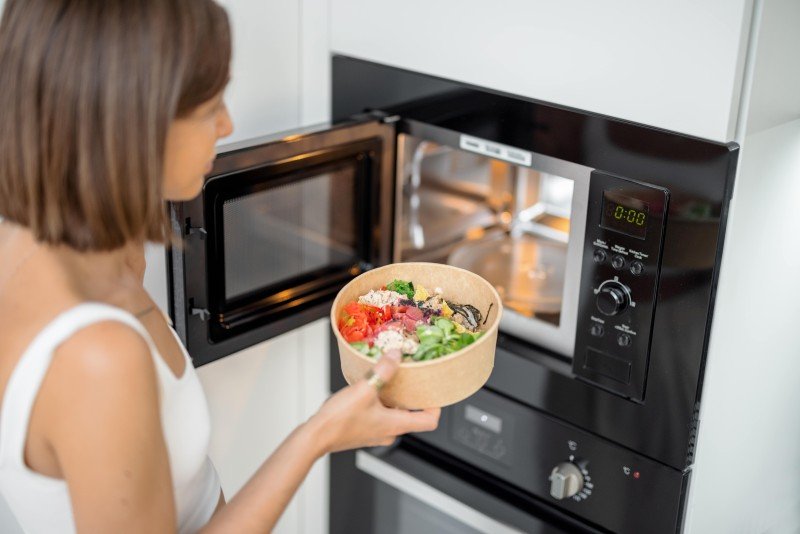The Comprehensive Guide to Sales Ovens: Understanding Their Importance, Types, and Best Practices
Sales ovens, a classification of business cooking devices, are crucial gamers in the culinary and foodservice market. These devices, designed to prepare food in big quantities effectively, are essential in restaurants, catering services, and other food establishments. This post digs into the value of sales ovens, their types, and best practices for selecting and using them successfully.
What Are Sales Ovens?
Sales ovens, broadly defined, are cooking gadgets utilized mainly in industrial kitchens to prepare, bake, or heat various food items at scale. Their style allows them to deal with higher volume cooking compared to basic domestic ovens. Provided the nature of food service, sales ovens frequently incorporate advanced technologies that promote speed, efficiency, and even cooking.
Value of Sales Ovens in the Food Industry
Sales ovens play a critical role in food production for numerous factors:
- Efficiency: Sales ovens can cook food faster and evenly than conventional ovens, enabling chefs to prepare meals in less time.
- Consistency: With precise temperature controls, sales ovens make sure that the food is cooked equally each time, keeping quality throughout countless portions.
- Adaptability: Many sales ovens can manage various cooking techniques consisting of baking, roasting, broiling, and even steaming, making them ideal for diverse menus.
- Energy Savings: Modern sales ovens are frequently developed to be energy-efficient, reducing functional costs for organizations.
Types of Sales Ovens
The market provides a range of sales ovens, each suited for particular cooking needs and kinds of food. Here are the most typical types:
| Type of Oven | Description | Best For |
|---|---|---|
| Convection Ovens | Employ a fan to distribute hot air, guaranteeing even cooking. | Baking and roasting items. |
| Combi-Ovens | A combination of convection and steam cooking, supplying flexibility in cooking methods. | Diverse menus requiring steaming and baking. |
| Conveyor Ovens | Utilize a moving belt to continuously prepare food, perfect for high-volume operations. | Fast food and pizza. |
| Deck Ovens | Function different compartments (decks) that can be independently managed, providing high efficiency. | Craftsmen bread and pastries. |
| Rotisserie Ovens | Designed to slowly roast meat on a spit, offering tender and juicy results. | Roasted meats. |
Picking the Right Sales Oven
Choosing the suitable sales oven for a particular company needs consideration of numerous elements:
- Volume Needs: Assess the volume of food that needs to be prepared. Higher volume means choosing for conveyor or combi-ovens.
- Menu Diversity: Understanding what kind of meals will be cooked can direct the selection process. For instance, a bakeshop might require a deck oven, while a restaurant might gain from a convection oven.
- Area Availability: Measure kitchen area to ensure the ovens fit appropriately and have needed ventilation.
- Budget plan: Commercial ovens can differ considerably in price, so develop a budget that thinks about long-term operational cost savings.
- Energy Efficiency: Opt for ovens that have energy rankings to keep utility expenses workable.
Best Practices for Using Sales Ovens
Effectively running a sales oven involves more than basic use. Here are some best practices to keep in mind:
- Regular Maintenance: Schedule routine upkeep to tidy and inspect the performance of the oven. This ensures durability and efficiency.
- Pre-heating: Always preheat the oven to the desired temperature level before positioning food inside for consistent cooking outcomes.
- Utilize Thermometers: For precision, utilize an oven thermometer to guarantee that temperatures stay constant, particularly for baking.
- Follow Cooking Times: Adhere to advised cooking times based on the type of food being prepared. Changes might be necessary for various ovens.
- Prevent Overcrowding: Ensure enough area around food products in the oven to allow for proper air blood circulation.
The Future of Sales Ovens
As innovation advances, so do the abilities of sales ovens. Innovations such as smart innovation, energy-efficient styles, and enhanced safety features are ending up being more popular. Hobs Online to boost cooking effectiveness while likewise satisfying sustainability goals.
Frequently Asked Questions about Sales Ovens
Q1: How do I clean my sales oven?
A: Regular cleaning involves removing any food debris, wiping down surfaces with non-corrosive cleaners, and following specific cleansing suggestions from the maker.
Q2: What's the lifespan of a business oven?
A: Typically, a properly maintained industrial oven can last anywhere from 10 to 20 years, depending upon usage and upkeep.
Q3: Can sales ovens be utilized for baking?
A: Yes, lots of kinds of sales ovens, specifically convection and deck ovens, are particularly created for baking a variety of products.
Q4: Are there energy-efficient alternatives for sales ovens?
A: Yes, several manufacturers use energy-efficient designs that decrease energy intake without compromising efficiency.
Q5: How often should I conduct upkeep on my sales oven?
A: It's recommended to carry out regular maintenance checks every month or quarter, depending on use levels. Additionally, an extensive evaluation should happen a minimum of each year.
Sales ovens are indispensable in the contemporary cooking landscape. Their ability to cook large amounts of food efficiently makes them important for restaurants, catering services, and other food establishments. By understanding the different types, choosing the right oven, and sticking to best practices, food service businesses can enhance their cooking processes, enhance their offerings, and ultimately thrill their customers with impressive cooking developments.

